Imec together with its silicon photovoltaic industrial affiliation program partners Schott Solar, Total, Photovoltech, GDF-SUEZ, Solland Solar, Kaneka and Dow Corning, have demonstrated an excellent conversion efficiency of 23.3% on interdigitated back-contact (IBC) silicon solar cells.
Dec 1st, 2011
Read more
This partnership explores an alternative solution and comprehensive platform to change the landscape on modern computing and system design with NVM devices featuring faster access, higher endurance, and more compatible integration with complementary metal-oxide-semiconductor (CMOS) technology.
Dec 1st, 2011
Read more
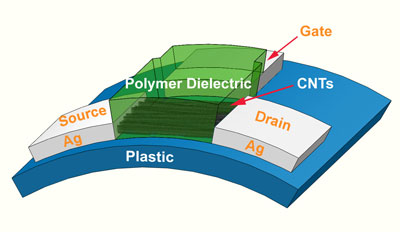 Researchers have used low-cost ink-jet printing to fabricate the first circuits composed of fully printed back-gated and top-gated carbon nanotube-based electronics for use with OLED displays.
Researchers have used low-cost ink-jet printing to fabricate the first circuits composed of fully printed back-gated and top-gated carbon nanotube-based electronics for use with OLED displays.
Nov 30th, 2011
Read more
Scientists have developed a way to optically test the concentration of ZnO nanoparticles at different skin depths. They found that the nanoparticles did not penetrate beneath the outermost layer of cells when applied to patches of excised skin.
Nov 30th, 2011
Read more
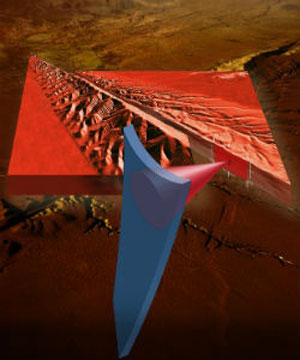 Earthquakes are some of the most daunting natural disasters that scientists try to analyze. Though the earth's major fault lines are well known, there is little scientists can do to predict when an earthquake will occur or how strong it will be. And, though earthquakes involve millions of tons of rock, a team of University of Pennsylvania and Brown University researchers has helped discover an aspect of friction on the nanoscale that may lead to a better understanding of the disasters.
Earthquakes are some of the most daunting natural disasters that scientists try to analyze. Though the earth's major fault lines are well known, there is little scientists can do to predict when an earthquake will occur or how strong it will be. And, though earthquakes involve millions of tons of rock, a team of University of Pennsylvania and Brown University researchers has helped discover an aspect of friction on the nanoscale that may lead to a better understanding of the disasters.
Nov 30th, 2011
Read more
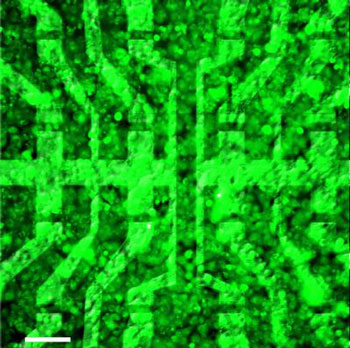 Novel nanocarbon platform shows potential for future bioelectronic implants.
Novel nanocarbon platform shows potential for future bioelectronic implants.
Nov 30th, 2011
Read more
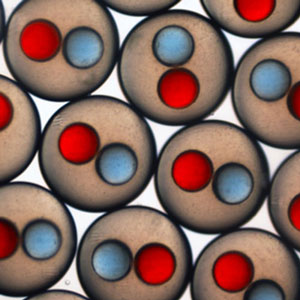 Experts gather this week to discuss the efficient creation and delivery of nanoscale particles of drugs.
Experts gather this week to discuss the efficient creation and delivery of nanoscale particles of drugs.
Nov 30th, 2011
Read more
 Scientists at The University of Nottingham have discovered a way to control how tiny flat molecules fit together in a seemingly random pattern.
Scientists at The University of Nottingham have discovered a way to control how tiny flat molecules fit together in a seemingly random pattern.
Nov 30th, 2011
Read more
In her doctoral dissertation, Suvi Karvonen examines the local and cell level modelling of PEMs, or polymer electrolyte membrane fuel cells.
Nov 30th, 2011
Read more
The event marked the Golden Jubilee of Solid State Physics Laboratory (SSPL), a premier institute of the Defence Research and Development Board (DRDO), working on development of solid state devices for defence needs.
Nov 30th, 2011
Read more
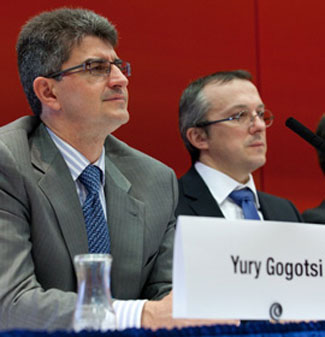 Researchers call for a new, standardized gauge of performance measurement for energy storage devices that are as small as those used in cell phones to as large as those used in the national energy grid.
Researchers call for a new, standardized gauge of performance measurement for energy storage devices that are as small as those used in cell phones to as large as those used in the national energy grid.
Nov 30th, 2011
Read more
 A nanoparticle that can destroy drug-resistant bacteria developed by the Institute of Bioengineering and Nanotechnology (IBN), and the IBM Almaden Research Center, has recently been named one of 10 world changing ideas by Scientific American in its Technology Special Report.
A nanoparticle that can destroy drug-resistant bacteria developed by the Institute of Bioengineering and Nanotechnology (IBN), and the IBM Almaden Research Center, has recently been named one of 10 world changing ideas by Scientific American in its Technology Special Report.
Nov 30th, 2011
Read more
It looks like bone. It feels like bone. For the most part, it acts like bone. And it came off an inkjet printer.
Nov 29th, 2011
Read more
The Lam Research Distinguished Chair is the Berkeley Nanosciences and Nanoengineering Institute's first-ever endowed Chair.
Nov 29th, 2011
Read more
A biomimetic antenna for gathering sunlight may one day transform solar-powered devices.
Nov 29th, 2011
Read more
The future brightened for organic chemistry when researchers at Rice University found a highly controllable way to attach organic molecules to pristine graphene, making the miracle material suitable for a range of new applications.
Nov 29th, 2011
Read more








 Subscribe to our Nanotechnology News feed
Subscribe to our Nanotechnology News feed